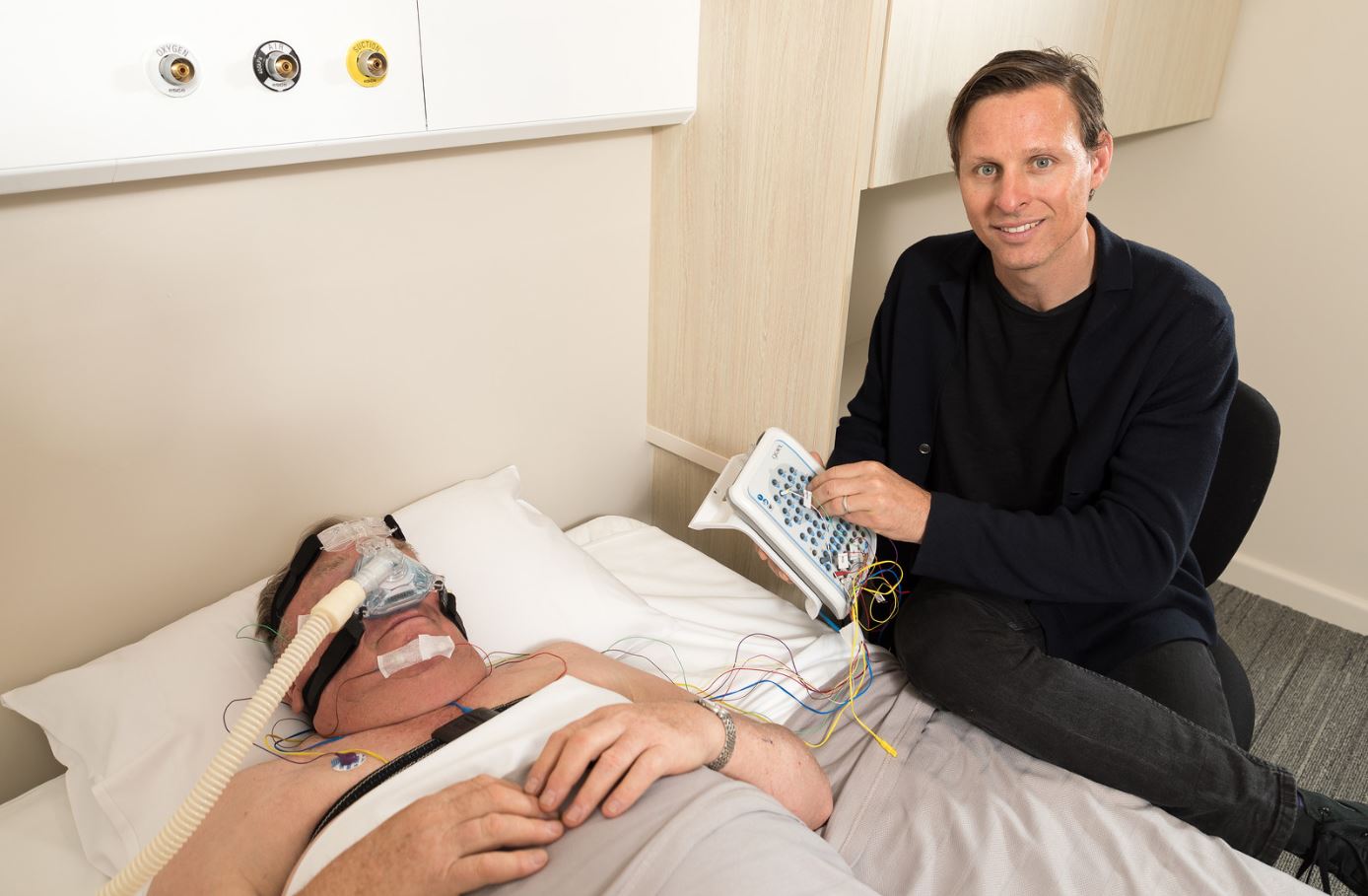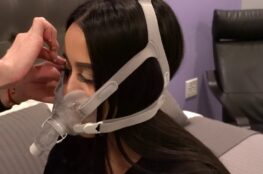CPAP treatment is often used by those with obstructive sleep apnea to treat their condition (OSA). From the large range of masks that are now available on the market, we examine a number of CPAP machines and masks that are suitable for side sleepers.
When an individual’s airways get blocked while they are sleeping, they develop obstructive sleep apnea (OSA), a disorder that affects their quality of sleep. People with OSA may have short breathing pauses while they are asleep. It’s a serious ailment that has to be addressed right now. Visit https://store.airliquidehealthcare.com.au/en/cpap-machines/ to get more about factors that causes to develop obstructive sleep apnea.
The soft tissues of the throat may loosen up to the point where they shut up while a person is sleeping, obstructing the airways. According to the American Sleep Apnea Association, type 2 diabetes and sleep apnea are both conditions that affect about 18 million people in Australia.
Anyone may have sleep apnea, but overweight men over 40 have a much higher chance of getting the condition.
The drug known as continuous positive airway pressure (CPAP) is the most popular therapy for obstructive sleep apnea (OSA) (CPAP).
See also: You should consider these CPAP machine factors

This article explains how CPAP machines function and presents a number of side sleeper-friendly mask choices.
How is CPAP used?
Continuous positive airway pressure (CPAP) treatment offers a high rate of efficacy for treating obstructive sleep apnea, according to the Australian Lung Association.
A patient using CPAP therapy wears a mask that is attached to a machine that pumps air into their airways while they sleep. The straps ensure that the mask remains in place.
A patient’s airway may benefit from a steady flow of air if they use CPAP machines. The apparatus’s continuous air pressure guarantees that the airway stays open and prevents it from constricting.
Sleep apnea is not treated with CPAP machines. However, they do not address the underlying problem that is causing the disease; they may reduce symptoms.
Patients often purchase CPAP machines and accessories from companies that specialize in the delivery of medical products.
A Trusted Source article from 2020 states that anyone with any of the following conditions would not be good candidates for CPAP therapy:
- those who are unconscious or unable to breathe on their own
- those who have facial burns
- those who are recovering from face, throat, or stomach surgeries
- those who are feeling queasy or sick
We only provide information that we think will be useful to our readers. We could get an affiliate commission if you buy anything after clicking on one of the links on this page. This is how we conduct ourselves.
CPAP treatment is often used by those with obstructive sleep apnea to treat their condition (OSA). From the large assortment of CPAP machines and masks now available on the market, we examine a few of them that are suitable for side sleepers.
When an individual’s airways get blocked while they are sleeping, they develop obstructive sleep apnea (OSA), a disorder that affects their quality of sleep. People with OSA may have short breathing pauses while they are asleep. It’s a serious ailment that has to be addressed right now.
The soft tissues of the throat may loosen up to the point where they shut up while a person is sleeping, obstructing the airways. According to the American Sleep Apnea Association, type 2 diabetes and sleep apnea are both conditions that affect about 18 million people in the United States.
Anyone may have sleep apnea, but overweight men over 40 have a much higher chance of getting the condition.
The drug known as continuous positive airway pressure (CPAP) is the most popular therapy for obstructive sleep apnea (OSA) (CPAP).
This article explains how CPAP machines function and presents a number of side sleeper-friendly mask choices.

Masks for side sleepers using CPAP
Although it could take some time for someone to become used to sleeping with a CPAP mask on, they should fit comfortably. Continuous positive airway pressure is referred to as CPAP.
To fit a range of people, there is a wide variety of masks available. People who breathe through their mouths while they sleep may choose entire masks or masks with a strap, while those who breathe through their nose while they sleep may choose nasal masks or models with nose cushions.
Many consumers choose to stop using the CPAP because they have trouble falling asleep while using it. The health of the individual can suffer as a result. Patients must choose a CPAP mask that does not interfere with their ability to obtain a good night’s sleep in order for them to be successful.
When wearing CPAP machines, side sleepers are more prone to have problems. Their mask’s ports might get blocked if their cushion is overly soft, which could be dangerous.
For individuals who sleep on their sides, the mask may shift during the night. Some masks may place an uncomfortable amount of pressure on the cheek while one is sleeping on their side.
A highly individual procedure that may entail some trial and error is choosing the right mask for you.
Specialized CPAP pillows may help people who struggle to wear their masks when sleeping on their sides. These pillows may be used by persons who use CPAP machines, and they can help stomach or side sleepers reach a comfortable position.

Travel Advice for CPAP Users Flying
You should not skip sleep apnea treatment just because you are getting on a flight. Nearly all travel CPAP machines, and the majority of more recent CPAP machines have FAA approval for usage during flights. Additional advice for CPAP users that is focused on flying is provided below:
AVOID Testing Your CPAP.
It’s uncommon for your baggage to be stolen, misplaced, or damaged, but it may happen, and the danger to your health is not worth it. Simply bring your CPAP in its carrying bag with you while flying.
DO NOT INCLUDE YOUR CPAP IN YOUR TRAVEL BAG.
Airlines are not permitted to treat CPAP machines as a carry-on item legally since it is regarded as medical equipment. (This also applies to APAP and BiPAP equipment.) Save the room in your carry-on luggage for other personal things, such as a few snacks, and store your CPAP in its own travel bag.
Always have your CPAP paperwork on hand.
Printing a copy of your manufacturer’s FAA compliance notice is a smart idea in addition to a copy of your prescription. (See an example of a ResMed travel compliance letter here.) These documentations won’t be necessary since the flight crew will presumably be acquainted with CPAP machines, but they will save you time and trouble in the unlikely event that a question does come up.
Give the airline a call at least 48 hours before the flight.
Although you must be allowed to bring your CPAP aboard, the airlines have the last word on in-flight usage, so it’s a good idea to phone beforehand and find out their policy. Ask if you may make a request for a seat with access to a power outlet while you are speaking with them.
Be careful to have an FAA-approved CPAP battery if a seat with an outlet is not offered.
Up to 3.4 Ounces of Distilled Water May Be Packed.
If you need to use your CPAP during the trip or right away after landing, having a small supply of distilled water in your carry-on luggage will be quite beneficial. Additionally, you are permitted to bring additional items in your checked bags. As was already said, always use distilled water since using tap water might cause minerals to build up and harm your CPAP machines.
Purchase of a portable CPAP that has waterless humidification.
Having a mobile CPAP might be a major benefit if you travel often. Choose a product with waterless humidification, such as the ResMed AirMini. Instead of having to bring additional water, the AirMini’s HumidX mechanism harnesses the moisture from your breath to humidify the airflow.



